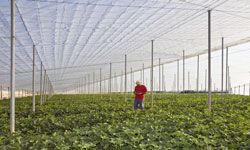We've been to the moon. We can cure fatal diseases and can even traverse the globe in a matter of hours. One of mankind's most important achievements, however, is little thought of and often disregarded: the greenhouse.
You might not think about them very often, but greenhouses allow modern society to function. They provide food for millions of people and act as a gateway between cultures by allowing specialized, regional foods to be grown just about anywhere. In the future, they'll do even more.
Advertisement
Through innovative thinking and radical designs, greenhouses have the power to change how we live and interact with one another and our environment. From using seawater to grow crops in the middle of the desert to helping us colonize distant worlds, greenhouses are undoubtedly going to be an integral part of humanity's future.
Click over to the next page to see how greenhouses are changing the way we live right now.


